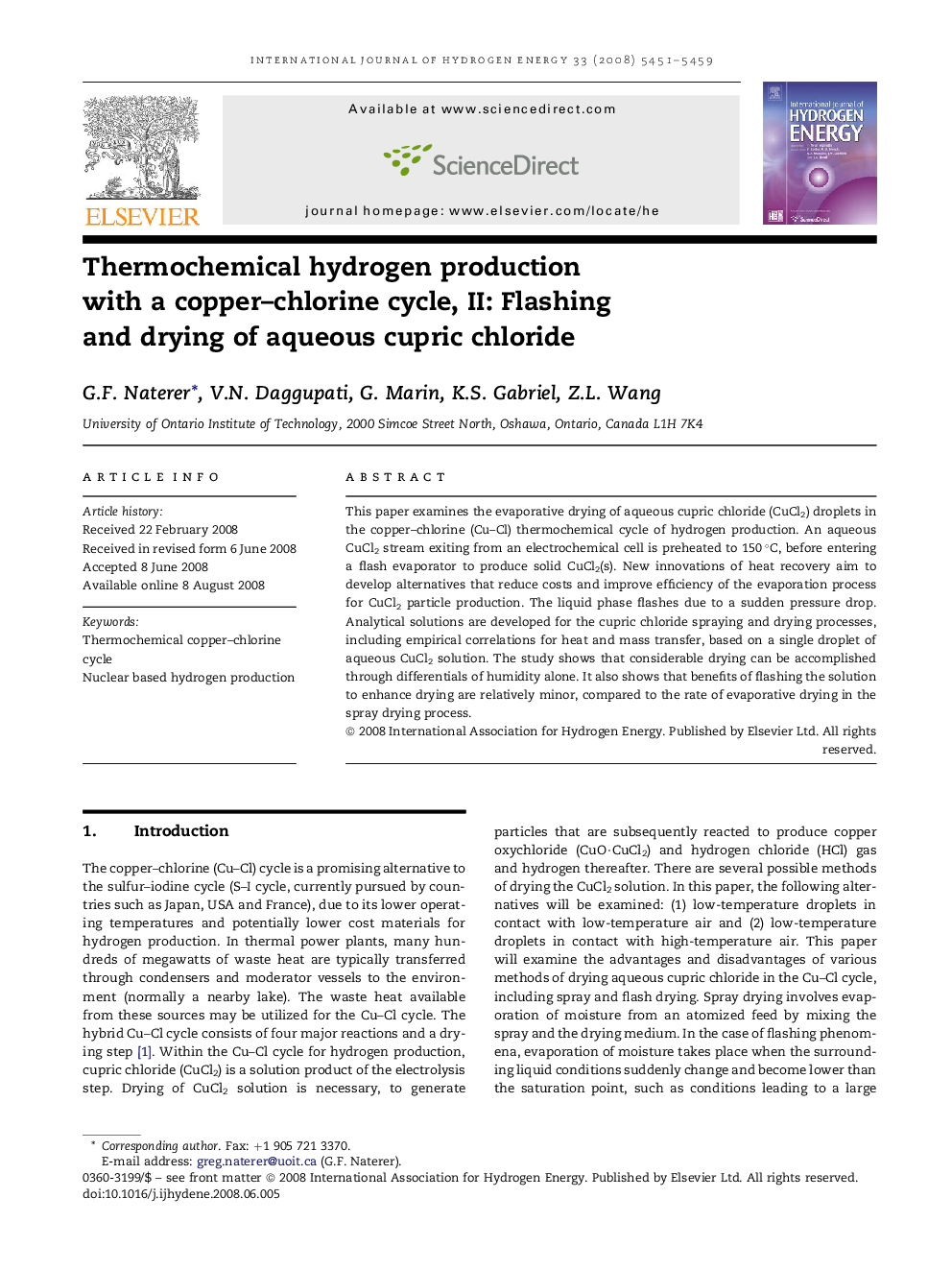| Article ID | Journal | Published Year | Pages | File Type |
|---|---|---|---|---|
| 1278480 | International Journal of Hydrogen Energy | 2008 | 9 Pages |
This paper examines the evaporative drying of aqueous cupric chloride (CuCl2) droplets in the copper–chlorine (Cu–Cl) thermochemical cycle of hydrogen production. An aqueous CuCl2 stream exiting from an electrochemical cell is preheated to 150 °C, before entering a flash evaporator to produce solid CuCl2(s). New innovations of heat recovery aim to develop alternatives that reduce costs and improve efficiency of the evaporation process for CuCl2 particle production. The liquid phase flashes due to a sudden pressure drop. Analytical solutions are developed for the cupric chloride spraying and drying processes, including empirical correlations for heat and mass transfer, based on a single droplet of aqueous CuCl2 solution. The study shows that considerable drying can be accomplished through differentials of humidity alone. It also shows that benefits of flashing the solution to enhance drying are relatively minor, compared to the rate of evaporative drying in the spray drying process.
